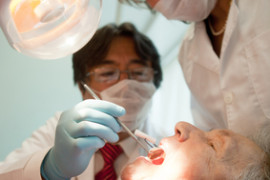When it comes to oral health and cardiovascular disease, there is much research that indicates a significant connection. Oral pathogens have been implicated time and time again in the progression of cardiovascular disease through their ability to translocate throughout the body and alter the body’s immune response to infection.
And, as it turns out, both of these characteristics may help one particular periodontal bacterium contribute to abdominal aortic aneurysms—ruptures in the lower part of the aorta that can cause life-threatening bleeding.
In an effort to explain why we often find periodontal pathogens in the aortas of patients with abdominal aortic aneurysms, researchers in Beijing conducted a study on the effects of pathogen Porphyromonas gingivalis on AAA in mice models.
The study, published in the Journal of the American College of Cardiology, examined mice with AAA who were inoculated with P. gingivalis over an eight-week period. Researchers found that the presence of the oral bacterium accelerated the progression of abdominal aortic aneurysm through its ability to incite the expression of interleukin-6 (an inflammatory cytokine) and MMP-9 (an enzyme that is involved in the breakdown of cells).
So it appears from this study that some of the same mechanisms that affect heart attacks, strokes, and other forms of cardiovascular disease may also play a role in the 13,000 deaths caused each year by aneurysms in the United States alone. That this oral bacterium—already notorious for causing so much damage throughout the body—may also expedite both the development and progression of abdominal aortic aneurysms just shows how important it is to identify and address it early in order to reduce its impact on disease.



